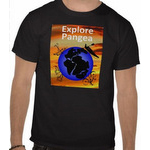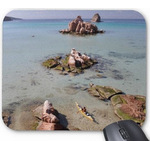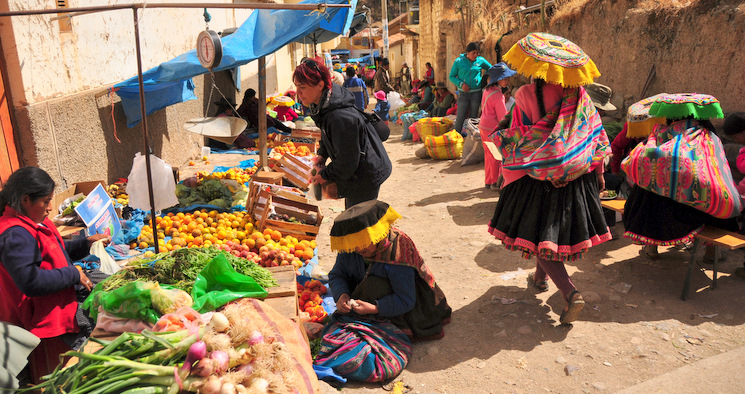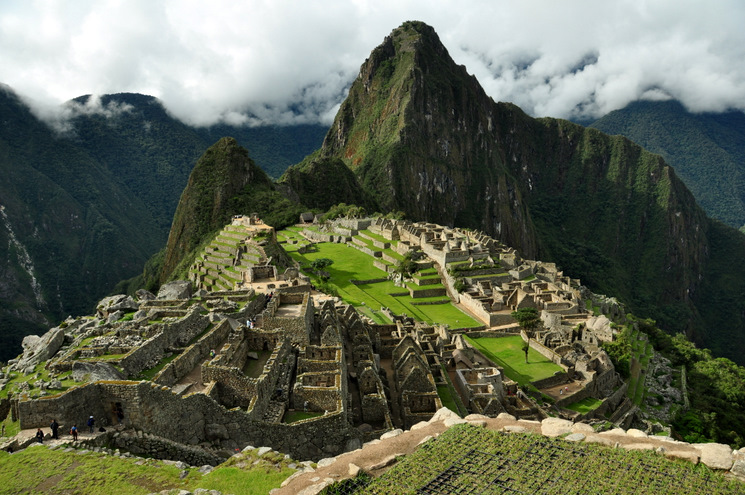• Logbook
• Road Stars
Photo album:
• From Pto. Maldonado to Cusco
Lodging and eating:
• Mama Simona Hostal (Cusco)
• Greens Restaurant (Cusco)
• Limo Restaurant (Cusco)
Download GPS files for From Pto. Maldonado to Cusco:
• GPS track & waypoints
In this stage we leave the Amazon jungle to get back to the Andean highlands. Over 300 mi and more than 16000 feet of elevation, we ride from the jungle to the rainforest and then to the highlands. The short-sleeved shirts are replaced by the Gore-Tex and later by the fleece. The tropical fruit juices will become coca leaves tea. The so much desired breeze from the plains cuts our lips on the mountain passes. Although the changes between the beginning and end of this stage are extreme, riding it by bike makes you feel them as gradually and can be appreciated without missing any detail. In this area we find at last with other cyclists. We were starting to believe we were the only ones in the continent!
The archaeological Inca sites at Cusco´s doors, announce the grandeur of what 5 centuries ago was the capital of the largest empire in South America. The Sacred Valley and Machu Picchu are a must-see, even if you have visited them before.
Stage index:
September 19, 2011: From Puerto Maldonado to Laberinto (Profile)
September 20, 2011: From Laberinto to Mazuko (Profile)
September 21, 2011: From Mazuko to Quincemil (Profile)
September 22, 2011: From Quincemil to Limacpunko (Profile)
September 23, 2011: From Limacpunko to Marcapata (Profile)
September 24, 2011: From Marcapata to Tambopampa (Profile)
September 25, 2011: From Tambopampa to Ocongate (Profile)
September 26, 2011: From Ocongate to Ccatcca (Profile)
September 27, 2011: From Ccatcca to Cusco (Profile)
Profile for the entire stage:
September 19, 2011: From Puerto Maldonado to Laberinto
Eventually we leave Puerto Maldonado. It seems every time we get to a city that provides services as a good hotel or restaurants we get stuck. But today, we leave before 7AM towards Puerto Rosario de Laberinto. Although the route is only 35 mi, we wake up at 5 AM because we still have to assemble the repaired wheel on the bike. While doing so we noticed that the brake pads are completely worn out and it has taken us some time to replace them and adjust the brake disc. Even as early as it is, the streets are filled with taxis, motorized tuk-tuks and moto-taxis. Traffic reduces considerably after passing the turn off for the airport.
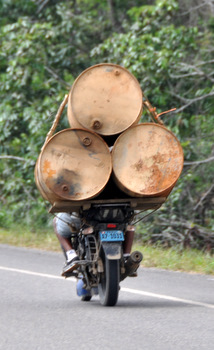
Laberinto is on the banks of the Madre de Dios River and gives the impression of being the supply center for the surrounding mines. At the port we see how the peke-pekes haul supplies, especially boxes of beer, going up and down the river. The best hotel in town is fully booked by the employees of the company that maintains the road. The second option also has all the rooms occupied and they don’t know yet whether any guests will leave today. It’s 10:30 and, according to the receptionist, some of the guests are still sleeping, drunk from last night. In the afternoon we get a room with bathroom. As extras we have a leaking faucet and a strong smell of paint.
We take a stroll down the streets and see a multitude of welding shops where they repair the mining machinery such as the pumps used in the dredges. On the street facing the river, businesses buying gold are side by side. After visiting the few streets, we go back to the room to build the elevation profile of the stages to Cuzco. In summary, we have to climb more than 16000 feet to reach the Andean highlands. Tomorrow we have 60 mi to ride with some pressure to pass them quickly so we go to bed early.
September 20, 2011: From Laberinto to Mazuko

After 30 miles, we find the first clusters of huts with plastic and palm leaves roofs. Most are welding shops or repair shops for motorcycles. We believe that the mines are at some distance from the road and the motorcycles are the means of transport used to reach them. From time to time, from the road we see tracts of land completely devastated by mining.

At 80 mi we get to Mazuko, considerably larger than Santa Rosa, and find a satisfactory accommodation. After the shower we go out to buy some vegetables to prepare a salad for dinner. Tomorrow we will get up early again to avoid the heat, so we go to sleep soon.
September 21, 2011: From Mazuko to Quincemil
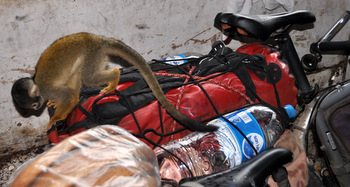
And, of course, in the rainforest, it rains. By midmorning we get the first shower of the day. Fortunately we are near a roadside house and take refuge on the porch. We chat with the two men who inhabit it. They have 4 pets: 3 puppies and one yellow monkey with pedogfil tendencies. When the shower becomes a light rain, we resume the route. A few hundred yards later we find Edmilson, a Brazilian rider that spent the night in the house where we just took shelter. Edmilson is in a road garage trying to fix his bike and after offering help we arrange to meet in Quincemil at the end of the day.
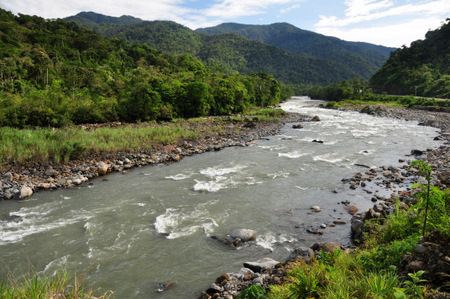
In the afternoon the sky clears up and the sun shines bright. We go for a walk down the street of the village and meet with Edmilson again. We have dinner together and talk about our respective stories. He has been on the road for 5 years and a half traveling by bike. Besides the classic Alaska-Ushuaia, he has toured all Latin American countries. We will meet tomorrow at 6 AM to begin the climb to Cuzco together.
September 22, 2011: From Quincemil to Limacpunko
It’s raining again. Anyway, we load the bikes to be ready as soon as it stops. We agreed with Edi that if it rained we would wait until it stopped. Around 7AM it stops raining, we wait a bit to see if Edi appears. We don’t know where he is staying at so we finally leave without him.
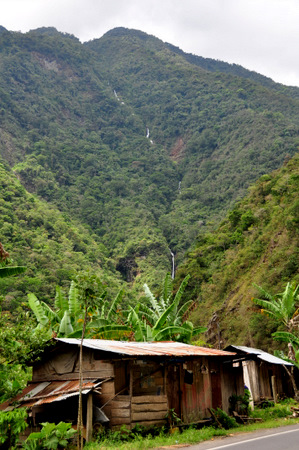
The miles are left behind and we keep gaining altitude. A few gray clouds are chasing us, pushed by easterly winds, dragging all the moisture of the jungle. Right before we arrive to Limacpunko, they catch up with us. We wanted to get to Marcapata, but it starts to rain with intensity and we have already ridden more than 30 mi and almost 5000 feet uphill. Enough for today. When we enter Limacpunko, from one of the hotels by the road, comes out a guy screaming. This is Cesare, another rider who travels with his wife Regis, from Cuzco to Rio Branco, in Brazil. Cesare convinces us to stay at the same hotel they are. After settling, we go down to the downstairs restaurant and begin to exchange information. After a while Edi shows up pedaling and Cesare goes rushes out to intercept him and make him stay with us. We all go outside and for a moment we are the center of attraction for the villagers in a public display of exaltation of friendship.
September 23, 2011: From Limacpunko to Marcapata
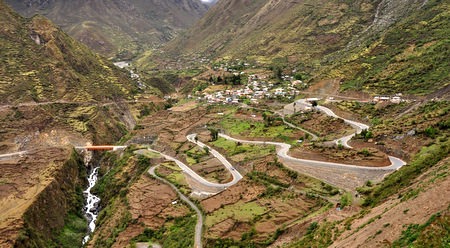
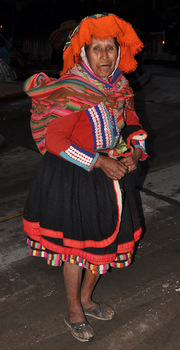
September 24, 2011: From Marcapata to Tambopampa

Finally, we decide to leave our cover and ride to a cluster of houses named Tambopampa. We find a room to stay and since we have climbed our 3300 feet, we decide to stop. In another house we have a fried trout with potatoes. There, we share the table with two guys that come from the gold mines near Mazuko. Indeed, they have decided to leave that job and return to Quillabamba. Although they made money quite quickly, life among miners was too dangerous.
September 25, 2011: From Tambopampa to Ocongate
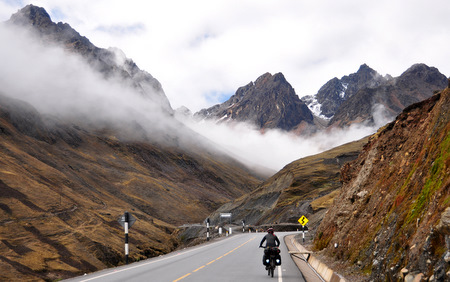

Today is Sunday, and it´s market day in Ocongate. The residents of the surrounding attend the weekly event too buy food and other necessities. In the central square and surrounding streets stalls of fruit, vegetables and bread huddle along with other selling pots, shoes, wool, etc, etc. Many women wear their traditional costumes. The most striking are the colorful hats, flat and circular, decorated with curtains hanging from the edges, in addition to the typical bundle on their back. The busy streets of Ocongate are a burst of color. And best of all, this is not a touristy market, this is authentic.
September 26, 2011: From Ocongate to Ccatcca

September 27, 2011: From Ccatcca to Cusco
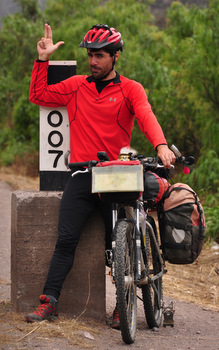
Arriving into Cusco is stressful, mainly for the traffic and the many miles crossing the surrounding cities, but we have finally reached the capital of the Inca Empire. We stay in Cusco for a few days visiting the narrow streets of the San Blas neighborhood, the famous stone of 12 angles and other prominent landmarks.
On a planned trip with our parents, next month we will visit the archeological sites around Cusco, as well as the Sacred Valley and, of course, Machu Picchu. This will be our second time in Ollantaytambo and Machu Picchu but we got as impressed as the first time, a few years ago. It’s unbelievable the skills and knowledge of the Incas to build these wonders.

